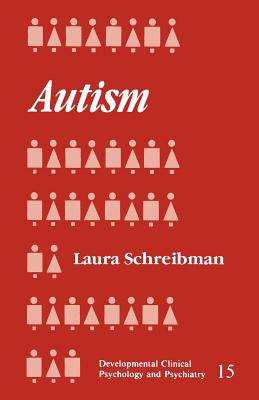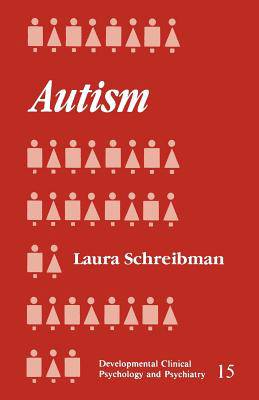
- Afhalen na 1 uur in een winkel met voorraad
- Gratis thuislevering in België vanaf € 30
- Ruim aanbod met 7 miljoen producten
- Afhalen na 1 uur in een winkel met voorraad
- Gratis thuislevering in België vanaf € 30
- Ruim aanbod met 7 miljoen producten
Zoeken
Omschrijving
What are the specific behavioral characteristics associated with the syndrome of autism? What are the current, and past, controversies surrounding etiology, diagnosis and treatment issues? How effective are current treatment models? Beginning with a thorough discussion of the history of autism, this authoritative volume details the behavioral characteristics associated with this fascinating disorder, diagnostic issues and assessment procedures, theories of etiology, and treatment approaches. The volume provides coverage of extensive research into these areas, particularly regarding behavioral treatment. "A superb book that is must reading for anyone interested in autism. Schreibman′s vast experience and scholarship are evident throughout this outstanding work." --Richard M. Foxx, Southern Illinois University "Scholarly, concise, readable, and loaded with useful references. This book represents the best single introduction to the problem that exists in the field today. Required reading for trainees in special education, clinical psychology, speech pathology, and child psychiatry. Outstanding resource for veteran investigators and clinicians as well. I am already looking forward to the second edition." --Edward Carr, SUNY at Stony Brook "[Dr. Schreibman] has been one of the true leaders in the behavioral study of this enigmatic disorder. My pleasure was derived even more from the excellence of this scholarly, yet highly readable, volume. It will be the first book that I recommend to students and working professionals who are interested in a comprehensive description of autism. I am delighted that a book of this quality is now available." --Glen Dunlap, University of South Florida "Laura Schreibman has constructed a timely and important update for families, practitioners, and researchers concerned with autism. The book is written in a very readable manner, yet contains a scholarly approach to the current issues . . . a well balanced and authoritative analysis of the facts that will be of substantial help to anyone attempting to sort out a complex array of information." --Robert H. Horner, University of Oregon "Laura Schreibman, an internationally recognized expert in autism, has provided professionals, students and lay individuals alike with a singular resource to this challenging disorder. "This volume comprehensively covers all major aspects of understanding and treating autism, yet at the same time does not sacrifice detail and precision in the information it provides. It is readable and clear, while carefully substantiating the technical and scientific basis on which the book rests. This is a must for all interested in autism!" --Judith E. Favell, Au Clair Palms "This book provides an excellent account of the distinctive nature of autism . . . The account given integrates both clinical and experimental literature and provides a comfortable balance for the reader." --Communication (The Journal of the National Autistic Society) ". . . a comprehensive discussion." --Biological Abstracts/RRM "Autism provides a through introduction to the primary issues associated with autism. The book is strongly recommended to the reader who has little knowledge on the topic of autism and to the professional as an organized secondary source of information." --Research in Developmental Disabilities "Parents and professionals will appreciate the author′s nice balance between research findings and anecdotal, descriptive accounts of autistic children′s behavior. The author′s optimism and enthusiasm for the ability of good research to impact our understanding and treatment of autism should be stimulating to budding researchers in the field . . . .Autism will serve as a good introduction to autism, particularly since it provides a concise and clearly written review of the landmark studies on the etiology, diagnosis, and nature of autism and conveys the author′s excitement for this field of research." --Child Development Abstracts and Bibliography "Aside from the excellent clinical chapters in Schreibman′s book, there are other soundly written chapters providing background information about autism. . . . For the clinician lacking in experience with autistic clients, the book serves admirably as a teaching manual both on autism and its treatment." --Journal of Autism and Developmental Disorders "A series of excellent brief books on a range of topics related to developmental clinical psychology and psychiatry. This volume on autism by Laura Schreibman maintains that tradition of high quality. . . . Schreibman manages to pack a remarkable amount into a relatively brief book and to summarize much of the important research that has been done to date. She alerts the reader to some of the key issues that arise in assessing research on autism. She has also done a lovely job of sharing her own sense of fascination and excitement about the study of autism." --Clinical Psychology Review "Deserve[s] a place on the bookshelf of those working in the field. . . . Provides a good introduction to previous research and theory." --American Journal of Psychiatry
Specificaties
Betrokkenen
- Auteur(s):
- Uitgeverij:
Inhoud
- Aantal bladzijden:
- 192
- Taal:
- Engels
- Reeks:
- Reeksnummer:
- nr. 15
Eigenschappen
- Productcode (EAN):
- 9780803928107
- Verschijningsdatum:
- 1/10/1988
- Uitvoering:
- Paperback
- Formaat:
- Trade paperback (VS)
- Afmetingen:
- 139 mm x 216 mm
- Gewicht:
- 272 g

Alleen bij Standaard Boekhandel
+ 320 punten op je klantenkaart van Standaard Boekhandel
Beoordelingen
We publiceren alleen reviews die voldoen aan de voorwaarden voor reviews. Bekijk onze voorwaarden voor reviews.











